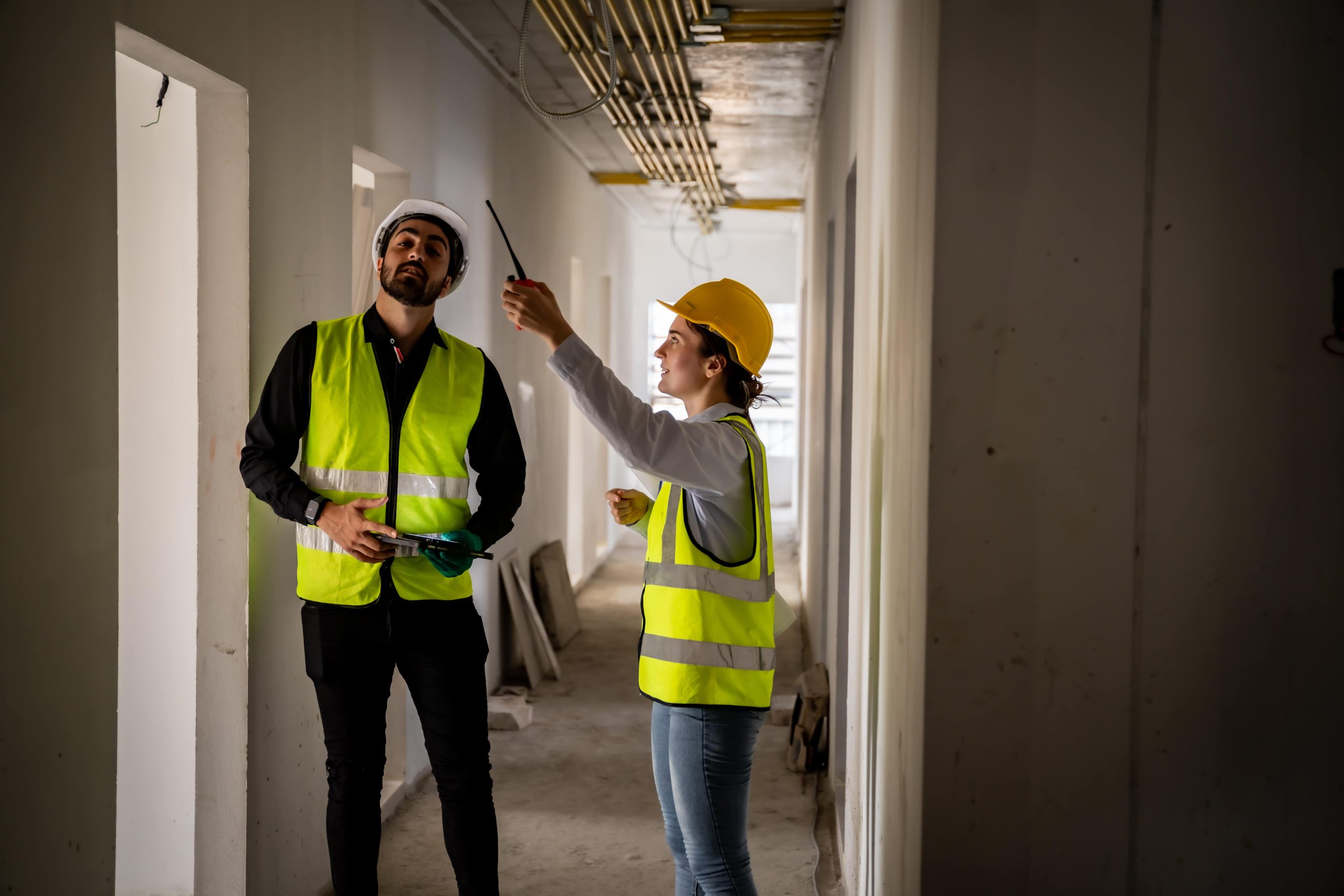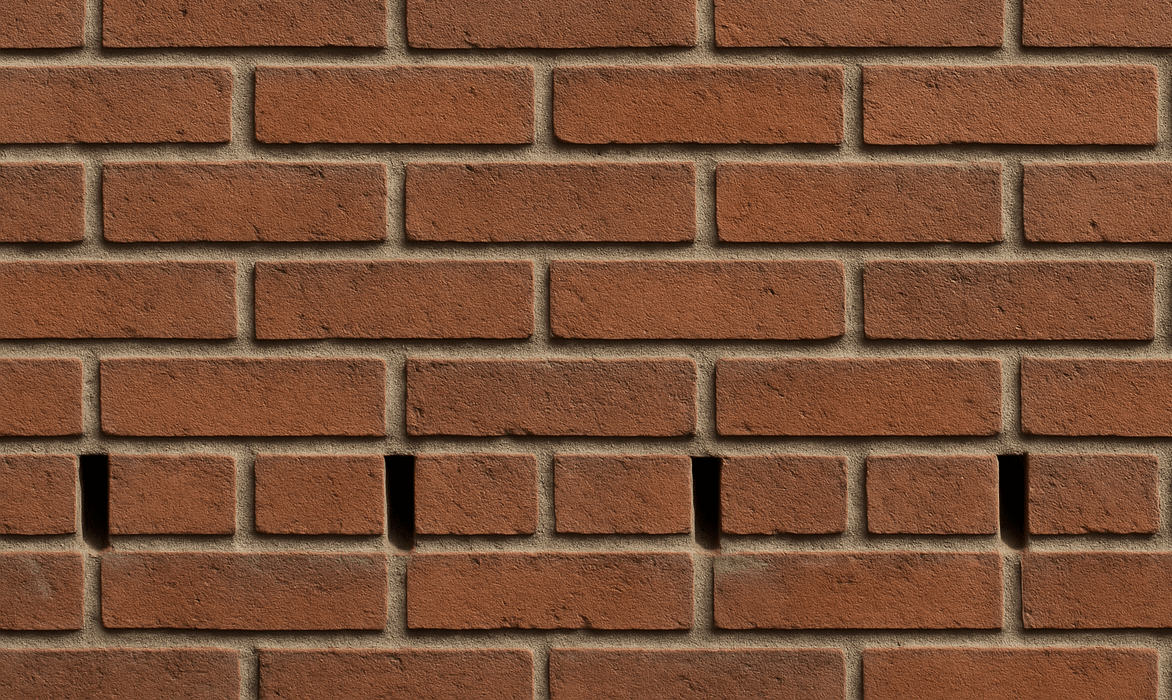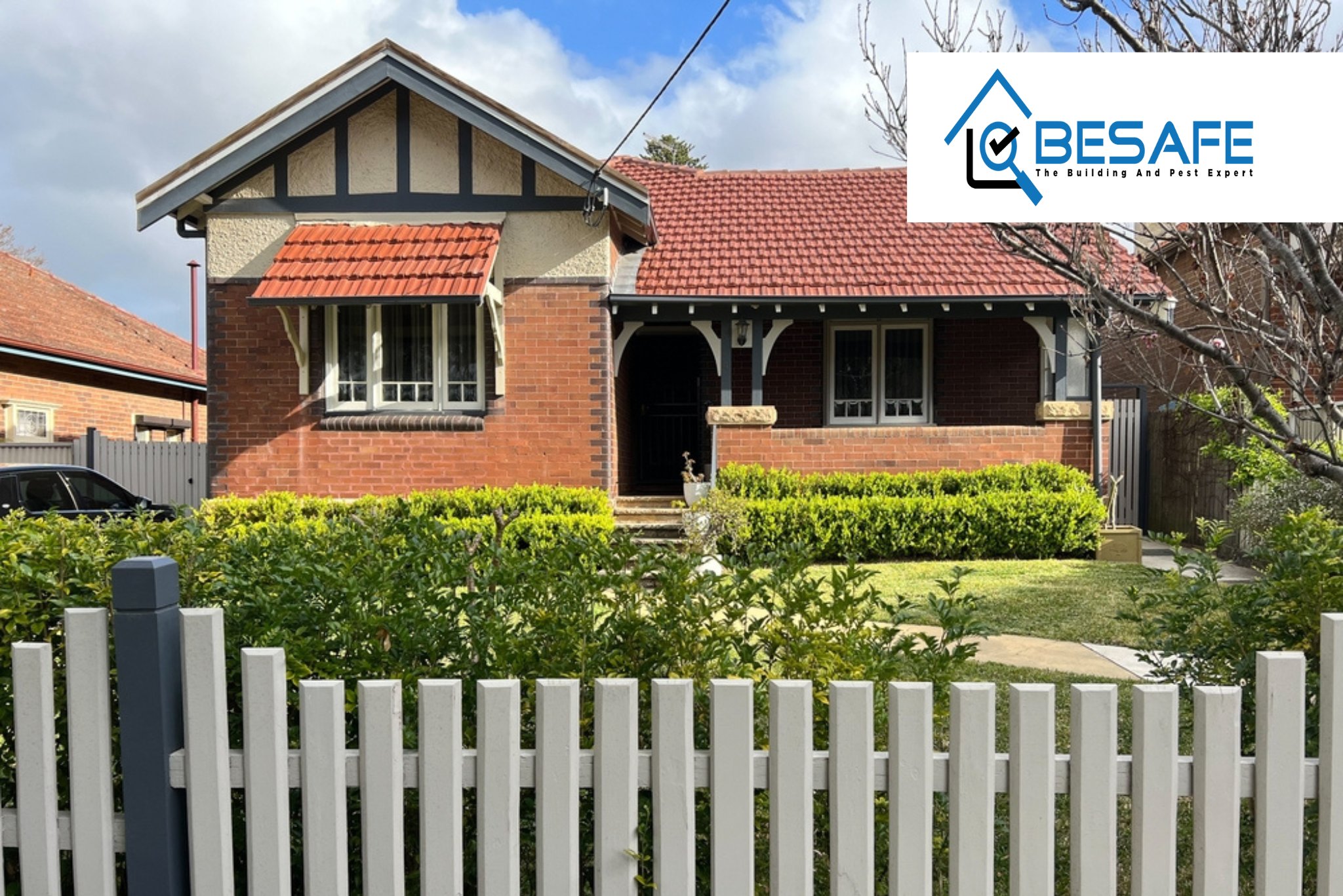
Ultimate Personal Property Inspection Checklist Before Booking an Inspection
From setting a budget and researching suburbs to securing financing, a significant amount of time, planning, and effort goes into the search for the right property. As property prices continue to rise, it’s no surprise that purchasing a home or investment property is one of the most important financial decisions many people will ever make.
That is why due diligence is non-negotiable.
Understanding the true condition of a property before you commit can help you avoid costly setbacks in the future. While professional inspections play a key role in this process, knowing what to look for before booking a professional inspection can offer valuable early insights, allow you to identify potential red flags, prioritise concerns, and make more informed decisions when it comes time to proceed.
At BeSafe Property Inspections, our team of licensed builders and experienced inspectors understands the many challenges of evaluating a property. In this post, we walk you through some of the most essential steps to consider before booking a professional inspection so you can approach your property purchase with greater confidence and clarity.
1. Understanding Your Property Goals
Before beginning the search for your next home, it’s essential to take the time to define your property goals clearly. These serve as a valuable framework for evaluating homes objectively, rather than relying on emotional responses that cloud decision-making. It can also save countless hours, help you avoid costly mistakes, and provide clarity throughout the inspection and purchasing process.
Define Your Must-Haves vs. Nice-to-Haves
Not every property will be perfect. Some homes may meet the majority of your requirements but fall short in a few areas, while others might offer impressive features that ultimately do not align with your practical needs. This is why it is essential to distinguish between your non-negotiables and your wishlist.
Must-haves are core requirements that directly impact your lifestyle, safety, and the property’s overall suitability. These are features you won’t compromise on, such as:
- The required number of bedrooms and bathrooms to accommodate your household
- A location that supports your daily routines, such as being close to work, schools, or transport.
- A structurally sound dwelling free of major defects or safety concerns
- A neighbourhood with an acceptable safety profile and community amenities
Nice-to-haves, by contrast, are additional features that may enhance comfort, convenience, or aesthetic appeal, but are not essential to the property’s functionality. These might include:
- Renovated kitchens or bathrooms
- Outdoor entertaining areas or landscaped gardens
- Energy-efficient appliances or solar installations
- Built-in wardrobes or extra storage solutions
Identify Your Deal Breakers
Equally as important as understanding what you want in a property is being clear on what you cannot accept. Deal breakers are specific property features or conditions that, regardless of other appealing aspects, render a home unsuitable for your needs. Identifying these early in the process can save considerable time, effort, and future expense. These typically include:
- The confirmed presence of asbestos
- High crime rates in the surrounding area
- Insufficient bathrooms
- Significant structural issues, such as termite damage or extensive water ingress
Unlike cosmetic features, many location-based and structural issues are often permanent or expensive to rectify. For this reason, it is recommended to be aware of the following:
- Flood zones: Contact your local council for flood zone data and historical records.
- Bushfire-prone areas: Check fire danger history and council requirements.
- Crime statistics: Review suburb-level crime data and visit the area at different times to get a feel for the environment.
Budget For Repairs
Many buyers focus solely on the purchase price without factoring in the additional costs of ownership, such as insurance, council rates, and ongoing maintenance. Financial experts recommend setting aside between 1% and 3% of your home’s value annually for maintenance, depending on factors like the property’s age, location, and type.
Unexpected repair costs can place undue financial strain on homeowners, especially in the first few years of ownership. For this reason, being aware of potential issues before making any commitments is essential.
During your property search, pay attention to signs that might indicate costly future repairs. These include sloping or bouncy floors, damp brick walls, blisters on paintwork, cracked walls, mould, fretting mortar and sagging roofs. Some are more obvious than others, so when proceeding with a property, a professional inspection will identify any hidden problems that may not be visible during a casual walkthrough.

2. Pre-Purchase Property Checklist
The difference between a successful property purchase and a costly mistake often comes down to the research conducted before even setting foot on the property. Taking the time to gather detailed information about potential properties can help identify deal-breakers early, saving both time and money on attractive but unsuitable options.
Research the Property Thoroughly
It’s tempting to rely solely on real estate listings and agent information when considering a property. However, conducting your own independent research can provide valuable insights that marketing materials often overlook.
- Property listing details (where available): Assess floor plans, land size, property features, and any recent renovations to get a clear understanding of what’s being offered.
- Google Maps and Street View: Examine the property’s surroundings, neighbouring properties, and the broader environment.
- Historical sales data: Review previous sale prices and the frequency of ownership changes to gauge the property’s market stability.
- Insurance databases: Check for regional risks like flood or bushfire, as these can impact both the property’s safety and your insurance premiums.
Visit the Area in Person
While online research is important, visiting the area provides irreplaceable insights that you can’t get from a screen. Here’s what to look for when you visit:
- Traffic patterns and parking availability: Observe the traffic flow and parking conditions at different times of day, as this could affect your daily routine.
- Neighbourhood activity and noise levels: Pay attention to the general vibe of the area, including noise from nearby streets or businesses.
- Sun exposure and natural light: Consider how much natural light the property receives, particularly if you’re sensitive to sunlight or are concerned about heating costs.
- Proximity to industrial areas or commercial establishments: Evaluate whether the property is close to commercial properties that might be noisy or disruptive.
- Investigate the Property’s History
A property’s history can significantly impact its future value and livability. Frequent ownership changes might indicate underlying issues. In Australia, homeowners typically stay in their properties for an average of 10-11 years, so multiple sales within a short time frame are worth investigating.
Also consider the age of the property. Homes constructed before 1990 may have asbestos, while properties built before 1970 may feature outdated electrical systems or plumbing that will need updates in the future.
- Check Council Zoning and Restrictions
Council zoning and local regulations can heavily influence your property ownership experience. These regulations can affect everything from renovation potential to the area’s future development. Common types include:
- Residential: Primarily for housing.
- Mixed-use: A blend of residential and commercial usage.
- Rural residential: Larger lot sizes with allowance for some agricultural activities.
Additionally, council records may reveal:
- Proposed developments: Future construction projects nearby that could affect property values or livability.
- Heritage overlays: Restrictions on renovations, often requiring special permits.
- Environmental protections: Local regulations that might limit land use or impose specific maintenance requirements.
- Natural disaster risks: Flood, bushfire, erosion, or landslide risks that could impact your property and insurance costs.

3. Home Inspection Checklist For Buyers
During your search, you are likely to find several promising properties. However, looking at images, reading listing descriptions and taking the time to view the property in person can quickly become overwhelming. Having a structured checklist can help you stay focused, identify any red flags early, and decide whether to proceed with the property or continue your search.
It’s important to note that this checklist is not intended to replace a professional inspection, but rather to serve as a preliminary screening tool. By identifying obvious concerns early, buyers can make informed decisions before investing in comprehensive professional assessments.
Key Areas to Assess During Your Walkthrough
1. Structural Integrity
The structural condition of a property directly impacts its safety, value, and long-term maintenance costs. Pay close attention to the following:
Roof Condition:
While a thorough roof inspection requires a professional, you can perform a visual check from ground level, noting any:
- Missing, cracked, or curling tiles/shingles
- Sagging areas or visible depressions
- Rusted metal sheeting or flashing
- Water stains on ceilings beneath roof lines
Wall Integrity
- Cracks wider than 5mm, which may indicate structural movement
- Diagonal cracks from window or door corners
- Horizontal cracks in brickwork
- Bulging or leaning walls requiring urgent attention
Windows
- Spot check windows to confirm they open, close, and lock properly
- Look for condensation between panes in double-glazed units
- Check frames for visible signs of rot, warping, or termite damage
- Feel for drafts that could suggest poor sealing or insulation
2. Electrical and Plumbing Systems
These systems are critical to a home’s functionality and can carry some of the highest repair costs when issues are left unchecked.
Electrical System
- Confirm the switchboard includes safety switches (RCDs) and circuit breakers
- Look for damaged power points or light switches
- Note any exposed wiring or evidence of DIY electrical work
- Be cautious of older properties (pre-1970), as they may require full rewiring
Plumbing
- Inconsistent water pressure, which can be tested by running multiple taps
- Slow drainage in sinks, showers, or tubs
- Water damage around sinks, vanities, and toilets
- Age and condition of the hot water system (if accessible)
- Stains or bubbling paint on ceilings or walls
3. Interior Condition and Functionality
Beyond the property’s structural elements and essential systems, the interior condition can reveal signs of ongoing maintenance needs and offer valuable insight into whether the home is well-suited to your lifestyle and daily requirements.
Moisture and Ventilation
- Exhaust fans in bathrooms and kitchens are working effectively
- Check windows for condensation
- Look at corners of ceilings and walls for signs of mould or mildew
- Musty odours, especially in enclosed or poorly ventilated areas
Flooring
- Walk through to feel for movement, squeaking, or sloping
- Inspect tiles for hollow sounds (suggesting poor installation)
- Look for signs of water damage, especially near wet areas
Storage and Living Functionality
- Adequate storage spaces, including wardrobes and kitchen cabinetry
- Doors and drawers that open and close smoothly
- Signs of pest damage or moisture in storage areas
Internal Walls
- Bubbling or rippling paint, which may suggest moisture problems
- Small holes that could indicate pests
- Fresh paint patches that may be covering damage
- Hollow sounds when tapping walls, indicating plasterboard deterioration
4. External Areas and Landscape
Drainage and Water Management
- Ensure gutters and downpipes are functional and not blocked
- Confirm the land slopes away from the house
- Look for signs of water pooling or poor drainage
- Inspect retaining walls for cracks or leaning
Fencing and Boundaries
- Check for structural damage to fencing and gates
- Confirm all gates operate and are secure
- Look for encroachments from neighbouring properties
Landscaping and Gardens
- Large trees within 3–5 metres of the home can affect foundations
- Retaining walls should appear stable and well-drained
- Consider the upkeep required based on garden layout and vegetation
External Structures
- Assess structural condition, especially roofs and walls
- Test windows and doors for functionality
- Look for visible pest damage or water entry
- Confirm any electrical installations are up to code

The Purpose of a Professional Property Inspection
Once you’ve found a home that checks all the boxes, it’s time to book a professional property inspection. While initial walkthroughs can offer a surface-level impression, a professional property inspection goes deeper, offering expert insight into a property’s true condition before you fully commit.
Even the most observant buyer can miss structural defects or hidden safety risks. At BeSafe Property Inspections, our inspectors use industry-standard tools and years of practical experience to identify issues that may otherwise go unnoticed to the untrained eye. Each inspection is carried out following Australian Standard AS 4349.1, ensuring accuracy, consistency, and reliability in every report we produce.
- Financial Protection: Inspections can reveal costly repairs early, helping you avoid unexpected expenses after settlement.
- Safety Assurance: We identify potential safety hazards, from electrical faults to unstable structures, that could put you or your family at risk.
- Long-Term Value: A clear understanding of maintenance requirements and structural integrity supports confident investment and future planning.
- Negotiation Power: Inspection findings often lead to renegotiated purchase prices or seller-funded repairs; buyers who identify major issues can save 3–7%, on average, off the asking price.
What a Standard Inspection Covers
Our inspections assess the accessible areas of a property and focus on:
- Interior Elements: Walls, floors, ceilings, windows, bathrooms, laundry, and stairs are checked for wear, damage, or signs of moisture and structural movement.
- Exterior Features: Such as garages, decks, gutters, eaves, and external finishes, ensuring they are structurally sound and properly ventilated.
- Structural Integrity: We assess critical elements like load-bearing walls, framing, and flooring for signs of movement, sagging, or deterioration.
- Roof and Gutters: Identifying rust, sagging, blocked downpipes, or damaged tiles.
- Flooring and Subfloors: Checking for uneven surfaces, hollow-sounding tiles, or signs of water damage.
- Water and Moisture Damage: Including leaks, condensation, or staining that could indicate larger underlying issues.
- Pest Infestations: Early signs of termite activity or rodent damage, which may require urgent treatment.
What’s Not Included in a Standard Building Inspection?
While building inspections are comprehensive, there are limits to what’s covered. These include:
- Swimming Pools: Pools and their systems require a separate inspection to assess structural integrity and functionality.
- Home Appliances: The condition or operation of appliances like ovens, air conditioning units, and dishwashers are not assessed.
- Hazardous Materials: Inspectors do not test for asbestos, lead paint, or other hazardous substances, though they may note visual indicators.
- Environmental Risks: Assessments do not cover flood zones, bushfire risks, or other location-based environmental hazards.
- Building Code Compliance: While we evaluate the property’s condition, we do not determine whether it meets local council or building code regulations.
How Much Does An Inspection Cost?
The cost of a building inspection varies depending on the size and complexity of the property. A standard inspection for a three-bedroom home typically starts from $425. Larger or more complex properties may require more time and resources to assess thoroughly, with inspection fees reaching up to $730.
Many buyers choose to invest in a combined building and pest inspection, which offers greater value and a more comprehensive overview of the property’s condition. These packages generally start at $525 for houses and $425 for units. However, for a more comprehensive, transparent, quote prospective buyers are encouraged to contact the team at BeSafe.

Key Takeaways
Preparation is key when it comes to purchasing property. Having a pre-inspection checklist can help lay the groundwork for a confident and informed decision. Preparation is key when it comes to purchasing property. It’s the final safeguard that can uncover hidden defects, structural concerns, or pest issues that may not be immediately visible.
At BeSafe Property Inspections, our licensed builders and experienced inspectors deliver detailed reports tailored to the unique demands of Sydney’s property market. With clear insights and expert guidance, we help you move forward with peace of mind.
Armed with a checklist and professional support, you’re ready to make a well-informed decision that protects your investment for years to come.
Book your inspection with BeSafe Property Inspections today and take the final step toward owning with confidence.
Featured news articles

Dilapidation Reports: What They Are and Why Property Owners Need Them
Learn what a dilapidation report is, why it’s essential before construction or demolition, and how it protects property owners from damage claims and disputes.

What are Weep Holes in Brickwork? Why Pre-Purchase Building Inspections Are Important
Learn what weep holes are, why they are vital for your home’s structural integrity, and how professional property inspections can prevent costly moisture and pest damage.

What is a Strata Report? Your Essential Guide Before Buying Property
Discover what a strata report is and why it’s crucial before buying a strata-titled property. Learn how it reveals financial, legal, and management insights to protect your investment.

How To Spot Drainage Problems: 9 Warning Signs To Look For Before Making A Purchase
Discover the 9 most common drainage issues to spot before purchasing a property. Protect your investment, learn expert tips to avoid costly repairs. Read now!

Top 7 Building Defects Found in New Sydney Properties: How to Spot Them
New doesn’t always mean defect-free. In Sydney’s booming property market, construction issues are more common than many buyers realise. From waterproofing failures to structural cracks, this guide breaks down the 7 most frequent defects found in new builds, and how to detect them before they escalate.

Pre-Purchase Building Inspection vs Pest Inspection: What You Need To Know
Buying property? Learn the key differences between pre-purchase building inspections and pest inspections, and why relying on just one could leave you exposed. Learn how these two essential inspections work together to give you a complete picture of a property’s condition, uncover hidden risks, and help you make a confident, informed investment decision.

Ultimate Personal Property Inspection Checklist Before Booking an Inspection
Discover why having a personal property inspection checklist is essential before booking a professional inspection. Taking the time to walk through a property with your own checklist allows you to identify areas of concern, prioritise your questions, and ensure nothing is overlooked. While it won’t replace the expertise of a licensed inspector, it empowers you to approach the inspection process with greater clarity and confidence.

First-Time Buyer’s Guide to Property Inspections in Sydney
Purchasing your first home in Sydney? Don’t skip the property inspection. This comprehensive guide provides key insights into what to expect during an inspection, common issues to be aware of, and how a professional assessment can protect your investment and save you money in the future.

The Impact of Sydney’s Building Boom on Inspection Standards
Sydney’s building boom is fueling rapid development, but it’s also raising concerns about the integrity of both NSW building standards and inspection quality. As construction accelerates, reports of defects are on the rise, raising concerns about the long-term integrity of new properties. With increasing pressure on the construction industry, learn how this affects inspection standards and what it means for property buyers.

How Much Does A Building Inspection Cost In Sydney?
A building inspection is an essential step in the Sydney property purchasing process, providing buyers with critical insights into potential structural issues and hidden defects. Inspection costs vary based on property size, type, and additional services required. This guide offers a comprehensive overview of building inspection pricing, key cost factors, and strategies to ensure purchasers receive the best value for their investment.

Should You Be Present at a Building & Pest Inspection? What You Need To Know
When you’re in the process of buying a property, a building and pest inspection is a crucial step in making sure you’re making a sound investment. However, one common question is whether it is necessary to attend the inspection in person. While it may seem convenient to forgo being present, attending the inspection offers valuable opportunities to gain insights directly from the expert.

What Is An Unsatisfactory Building Inspection?
An unsatisfactory building inspection can uncover hidden issues that may impact your property purchase. From structural concerns to plumbing and electrical problems, understanding what these findings mean and how to handle them is crucial.

Signs It’s Time To Walk Away From A Property
Investing in a property is exciting, but hidden building faults, pest damage, and financial red flags can all indicate it’s time to reconsider your choice. Understanding these crucial warning signs can help protect your investment and ensure you find a home that meets your needs

How To Find The Right Building Inspector
Discover essential tips for finding the right building inspector in Australia. Learn what to look for, questions to ask, and how to ensure you choose a qualified professional for your property inspection needs.

What Does a Building and Pest Inspection Cover?
A building and pest inspection is vital for any property transaction. This guide covers what these inspections include, from structural assessments to pest detection, and explains why they’re essential for safeguarding your investment. Learn about the advantages of professional inspections and find out how BeSafe Inspections can help ensure your property is in top condition.

Introducing our new strata inspector
BeSafe’s Strata Inspector Tina has joined the team to help us expand our capacity for delivering strata reports to unit and apartment buyers in Sydney.

Why Sydney homebuyers need independent property inspection reports
Property inspection reports are essential for Sydney buyers who want to ensure they get exactly what they are paying for.

Before you buy: Is your new house hiding leaks?
If you’re looking to buy a home in Sydney, a pre-purchase building inspection is vital to detect household leaks and rising damp.

Common Defects Found In Buildings
If you’re in the process of purchasing a new property, it can be daunting to consider the repairs it may need. Discover the most common building defects, their causes, and how to address them effectively to make informed decisions and protect your investment.

Building Inspections
Looking to purchase a property but wondering if you actually really need a building inspection

The Cause Of Wall Cracks
Understanding the cause requires consideration of a large number of factors

Cracks in Buildings
The sight of cracking can set off alarm bells in anyone considering purchasing a property


